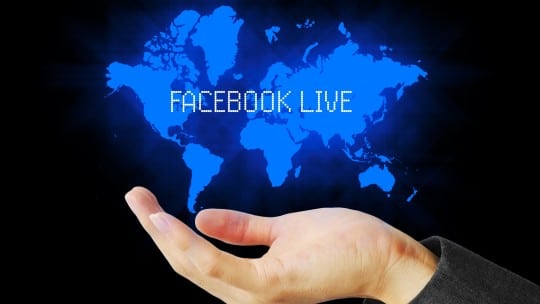
Take a glance at various data firms and news outlets that track communications and marketing trends. If there’s one that failed to mention Facebook Live (FBL) as among the top communications trends of 2016 we’d be surprised. We include ourselves in this, with IBM Global Technology Services’ digital experience manager Brandi Boatner saying in these pages last week that FBL had just gotten started last year and predicting it will be far bigger in 2017.
Far bigger? Begun one year ago, January 2016, some eight months later, in September, FBL was being used by 51% of the top 500 brands, according to Socialbakers, the analytics firm. Even Instagram, a Facebook sister company, made like FBL last month, initiating a live video feature.
Yes, we know, FBL is limited to mobile phones and that can make life difficult for those not interested in third-party workarounds that allow FBL broadcasting from your desktop. No longer. Toward the end of 2016 Facebook toyed with allowing some lucky users to shoot FBL video using devices other than mobile phones. In the early days of 2017 this became a reality for all. It’s evidence of how, at its best, Facebook does things. Certainly Facebook realized that tethering FBL to the desktop was an issue. It listened and innovated. Big time.
More evidence: listening to feedback from businesses, Facebook recently unveiled a slew of features for FBL including measurement and audience-growth tools. In recent days Facebook also has added a permalink feature, a tool to cross-post previous videos to different pages and an option to allow multiple users to post live video instead of having the page administrator have sole posting access.
Still unconvinced? OK, we realize you might be thinking, “I’m not with one of the top 500 brands.” Or maybe you are, but live video (heck, live anything) gives your C-suite the willies, not to mention senior communicators, who get anxious at the faintest whiff that they’re ceding control of message creation. As such, digital communicators at big brands might lack budget for FBL or live streaming of any kind.
Document, Don’t Create
Fortunately, such hurdles can be overcome easily, according to communicators we spoke with at year’s end and some rather stark evidence that occurred just a few days ago. On Jan. 10, a family of big brands by the name of ABC Television Group and Disney conducted its initial FBL stream of one of its gala events, staged at a gorgeous Pasadena, CA, hotel. The event was an evening soiree, loaded with ABC television stars and executives, provided for hungry, thirsty and tired members of the Television Critics Association, who’d spent the previous 9 hours listening to and questioning ABC and Disney execs and talent about their fall lineup.
But back to the live stream; with all that firepower, TV stars and all, you’d think the FBL stream would be a lavish affair technology wise and with fancy production values. Au contraire, ABC’s Nate Reeves tells us. For the white-carpet portion of the 3-hour stream, when the stars arrived at the party, there would be no announcers or interviews. Instead, Reeves tells us, plans were for “the camera to be placed at an aerial view at the top of the white carpet.” In other words, the plan was to be what internet entrepreneur Gary Vaynerchuk refers to as “document, don’t create.”
Events Make Good Streams

Social Media Manager
NASA
But ABC and Disney are hardly the only name brands to exploit FBL’s ability to humanize a company by providing fans with a behind-the-scenes experience relatively inexpensively. Steinway & Sons(see page 7) and space agency NASA are examples. John Yembrick, NASA’s social media manager, says its first FBL stream of a rocket launch, the “technology” consisted of a mobile phone atop a chair facing a TV that was tuned to NASA TV, which was carrying the launch live. In both the Disney and NASA cases the events, a gala party for TV critics and a rocket launch, were occurring with or without a FBL stream. Why not document them, simply, modestly for interested followers?
Test Constantly

Director of Social and Earned Media Activations
Viacom
A variation on this can be seen in examples provided by Karen Vega, director of social and earned media activations at Viacom. The brands she works with are events: slick, regularly scheduled TV series. The goal she pursues with her low-tech, almost-no-budget FBL campaigns—and she advocates knowing your goals upfront, as with any PR effort—is raising awareness for those shows between episodes.
That’s why her FBL vids run the gamut from informal drop-ins with TV stars to scheduled-in-advance interviews that can be promoted weeks in advance. But not too far, she says. People forget promotions for video except when they’re the day of, she says.
“Exhaust all media-outreach vehicles to promote,” she says. Still, Vega advocates always testing promotion times as well as FBL video formats. A good test budget, she says, is about $5,000.
CONTACT: @yembrick [email protected]
